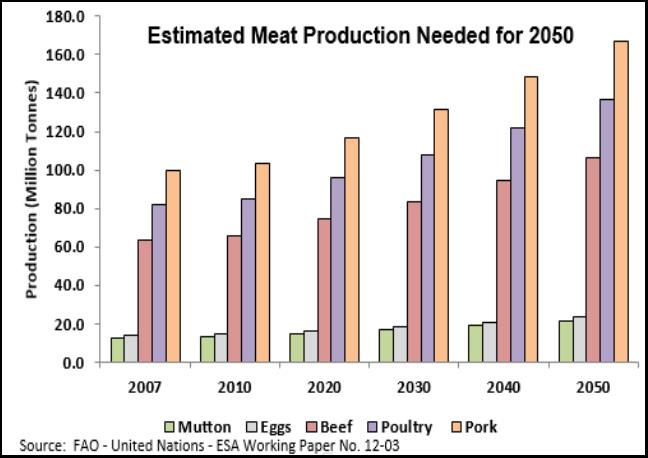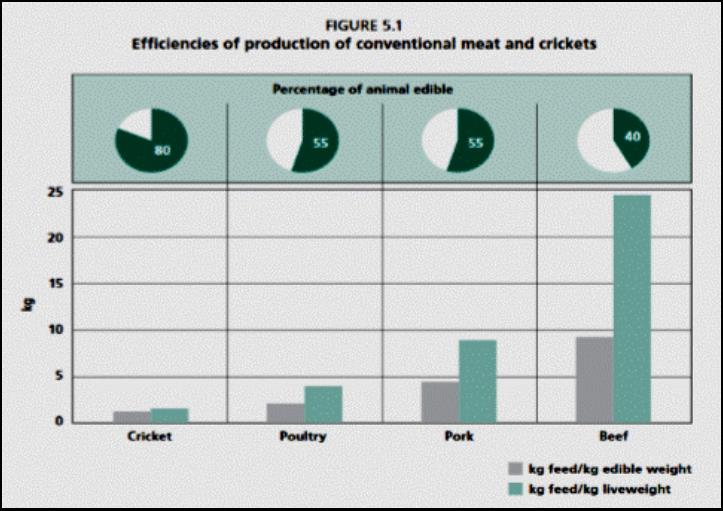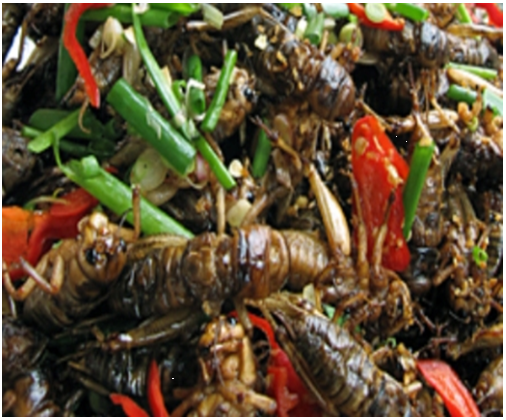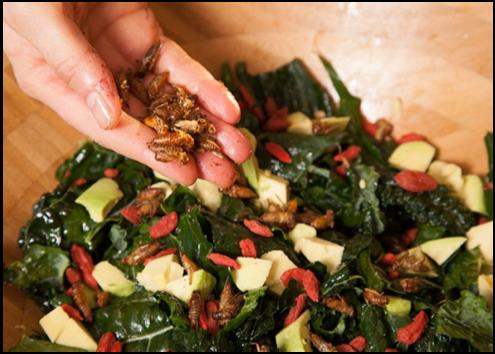| | Introduction | Why insect proteins? | Efficiencies of production | Insect protein has a history…..| What is happening in the area? | Sources
.
Introduction
The practice of eating insects is known as Entomophagy. Eating insects is not as far-fetched as you may think. You can already buy flavored crickets and insect protein bars. Insect protein powder is also being introduced in a wide variety of products.
This wave of interest was instigated by a report written by the Food and Agriculture Organization of the United Nations (FAO). With the expected growth in world population to reach 10 billion by 2050, researchers are looking at alternative proteins as a means to supply protein for human consumption..
Why Insect Proteins?
Population growth
In 2012, the world population estimate stood at seven billion people. According to the FAO, the world population is expected to reach ten billion by 2050. That is three billion more people in less than 38 years. With an additional three billion population to feed, the world would need more animals to supply protein. Below is a chart that shows the estimated production of livestock needed by 2050.

The earth is only so big, so we have to make do with the land we have. The total land surface area of Earth is about 57,308,738 square miles, of which about 33 per cent is desert and about 24 per cent is mountainous. Subtracting this uninhabitable 32,665,981 square miles from the total land area leaves 24,642,757 square miles, or 5.77 billion acres of habitable land. (Source: http://www.zo.utexas.edu/courses/Thoc/land.html). To use less land for the needed protein the FAO has considered the use of insects as a possibility.
Efficiencies of Production
Some insects are high in protein and should be a viable option for human consumption. The figure to the left shows various protein sources and the percentage of the animal that is edible. It also shows the kilograms of feed needed to produce a kilogram of edible weight and a kilogram of live weight.

Source: Copied from FAO Forestry Paper 171
Insect Protein Has a History…..
The eggs, larvae, pupae and adults of certain insect species have been eaten by man since prehistoric times and continue to be an item of human nutrition today.
Human insect-eating is common to cultures in most parts of the world. According to the FAO over 1,900 species of insects are known to be eaten and form the traditional diet of at least two billion people. The total number of ethnic groups recorded to practice entomophagy is around 3,000. Today insect eating is rare in the developed world, but insects remain a popular food in many developing regions.
What is Happening in the Area?
In North America, insects are considered undesirable and only something to be eaten on television shows such as Fear Factor or as a dare. However, there are companies that are trying to change the North American perspective. Crickets seem to be the insect that we hear about most often, but there are many other insects available for consumption.
One interesting website is http://4ento.com/2015/02/23/insect-food-products-currently-available/. They have a list of products available from the US, Belgium, France, Netherlands, Norway, UK, and Canada. The list is not exhaustive, but does give you some idea of how many companies are getting involved and the type of products being produced.
There is growing interest in entomophagy by large multinational food conglomerates. They are watching this trend very carefully. Companies in this business say that demand far outstrips the available supply of insect protein and they are excited to be in the business. According to an article on wired.com, investors are betting millions of people won’t balk at eating bugs. This business is not only attracting bigger companies interested in their products, but also the interest of investors. Exo, a company that makes protein bars with insects in the US, has raised $4 million from investors such as Collaborative Fund, as well as food companies like Hampton Creek. Chapul won a $50,000 investment from Mark Cuban on Shark Tank in 2014 for an endeavor involving insect protein. Tiny Farms, a company that develops technology for raising insects, received an undisclosed amount of funding from Arielle Zuckerberg. She is Facebook founder Mark Zuckerberg’s sister.

Why do companies think the market for insect protein will evolve? One of the reasons is the use of the protein in snack bars, protein powder and protein ingredients.
Lauren Jupiter, managing partner at Accel Foods, agrees. As an investor in Exo she says “The market for snack bars, protein powder and protein ingredients is estimated to be worth $55 billion dollars. This total global market expands to $371 billion when considering the applications for crickets and cricket ingredients in pet food, nutraceuticals, livestock feed, and other industrial uses.”
On the consumer side, the popularity of high-protein diets, concerns about meat production, and the growing aversion to highly processed foods are trends that work in favor of the insect diet. Plant-based meat alternatives are often made with soy or wheat gluten, two ingredients many people are allergic to or may have difficulty digesting. Insect protein gives consumers an alternative to animal protein with minimal modification from its natural state.
It will be an interesting industry to watch as it progresses from infancy to more main stream.

The Calgary Stampede’s food options for 2016 will include sticky toffee bug balls that are sprinkled with meal worms and crickets. They are also offering for your culinary delight scorpion pizza. Give it a try! You might be surprised!
Sources:
|
 |  |
|
|